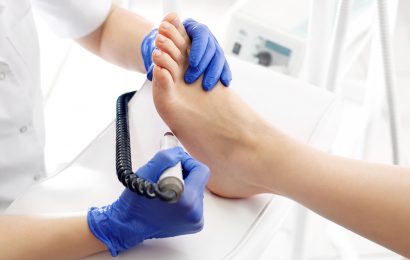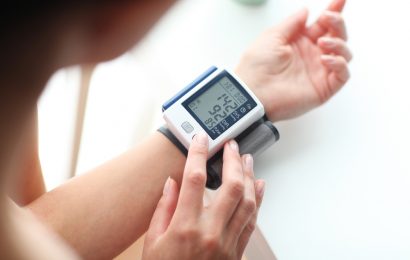Most people walk, stand, and push with their feet countless times throughout each day without much thought, and our feet are often one of the most neglected parts of our body. However, good foot care habits are essential for individuals with diabetes. Please take the following quiz to test your knowledge of diabetes foot care. (You’ll find answers later in this article.)
Q
1. Which of the following are good foot care tips for people with diabetes?
A. Have good blood glucose control.
B. Do daily foot care and inspections.
C. Try to do some form of exercise several times per week.
D. Never walk around barefoot.
E. Have your doctor check your feet at least once a year.
F. All of the above.
2. Diabetes can cause nerve damage and loss of a person’s protective sensations, which can lead to complications.
TRUE
FALSE
3. An individual with diabetes needs shoes that fit properly, so when is the best time to buy shoes?
A. First thing in the morning.
B. Midday around lunchtime.
C. Towards the end of the day.
D. Anytime during the day.
A
1) F. Complications of the feet can be prevented or delayed with good blood glucose control and good habits. The first good habit is daily foot care, including keeping the feet clean and dry and using lotion or cream to the tops and bottoms of the feet only every day. (In particular, avoid applying lotions or creams between the toes.) Inspect your feet every day — look for cuts, scratches, blisters, and swelling, and report abnormal findings to a doctor. You can further improve circulation to the feet by doing physical activity within your limits; always consult a physician before beginning any new physical activity. And never walk around barefooted, even in a house. Think of your shoes as a protective barrier from anything on the floor or the ground. Finally, a doctor should check your feet at least once a year, and more often for people at high risk of foot complications. To remind yourself, take off your shoes and socks before your doctor enters the exam room. These simple behaviors and habits can help keep your feet healthy.
2) True. People with diabetes can develop peripheral neuropathy, or damage to nerve endings, often of the feet and hands. Chronic elevation of blood glucose levels can cause nerve damage and change in the sensitivity of your feet. This loss of “protective pain” may lead to minor injuries that become serious over time, leading to foot ulcers, toe amputations, or foot amputations. Remember: Always wear proper-fitting, comfortable shoes and socks, and protect your feet from extreme heat and cold.
3) C. People with diabetes should buy their shoes closer to the end of the day. Your feet can swell throughout the day, and they will be largest after you’ve been on them all day. Shoes that fit properly are particularly important for people with diabetes, so have your feet measured regularly. Another tip to keep in mind when buying shoes is to try on the shoes with socks to get a proper fit. Good walking shoes with lace ties of leather or fabric material are recommended. Inspect your shoes frequently to ensure that no foreign objects have fallen into them and that there are no cracks or tears in the cushion or shoe lining. Finally, people who have peripheral neuropathy should break in new shoes gradually and always inspect their feet for blisters or pressure points after wearing new shoes.
Want to learn more about caring for your feet with diabetes? Read “Healing Numb Feet,” “Common Foot Problems and Their Solutions,” and “How to Choose Footwear.”





